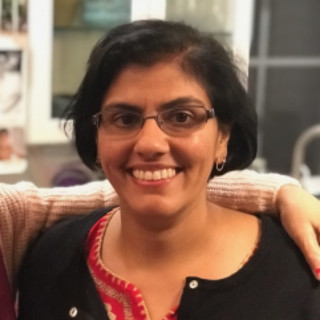
The famous philosopher Heraclitus once said that change is the only constant in life. I learned that lesson late, having an IVF pregnancy as a single 44-year-old pediatrician.
I froze my eggs at 38 years old, completed three rounds of IUI, followed by three rounds of IVF, and only became pregnant with the last of my eggs. My plans were constantly changing. Prior to my final embryo transfer, I was already considering the possibility of adoption. If you asked me five years ago, none of this would have been on my radar.
I passed the stage of disbelief about becoming pregnant as I entered 24 weeks, the week of viability in the medical world. I reflexively told myself that if the baby was born after 28 weeks, she would be fine. I thought I had seen it all during my pediatric training in the NICU. But, when I passed the 36-week mark in mid-March and preeclampsia hit, the outcomes shocked and humbled me. Change had, once again, proven to be the constant.
And then, coronavirus reached the United States. I was told by the obstetrician to go to the maternity ward “through any door but the ER.” Nurses whispered outside the door about rapidly changing protocols, complaining of ambiguous mask requirements. I waited intently for them to clear me to go home on bed rest … but then I heard the nurse say, “Oh no, you won’t be leaving here without delivering first.” My induction turned into a C-section. During my week-long postpartum stay at the hospital, my newborn daughter was transferred from the nursery to the NICU. “A 36-weeker will be out of here in no time,” I thought to myself.
But change was the only constant….
The first time I went to the NICU to see my daughter, the once-familiar place became new to me. In pediatric residency, I ran frantically at 6 a.m. to pre-round on 20 babies before NICU rounds with the attending. Bedside nurses guarded their babies fiercely. “You wake the baby, you take the baby,” I’d heard them say. Now, my vision was skewed and narrow, focused on only one of the 40 babies in the NICU. I was wheeled to her bed and didn’t quite know what to do with her. “How do I feed this baby?” I thought to myself. I looked up. The nurses that had once been my obstacle to completing morning rounds were now my guiding saviors.
As a pediatrician, my conviction to breastfeed was steadfast—but translating conviction to action was another story. Because my daughter wasn’t eating enough on her own, breastfeeding quickly morphed into bottle-feeding, and eventually, an NG tube had to be placed. My heart sank. I had now truly entered NICU terrain: I had a baby that was less likely to survive if she was sent home in her current state. Each day started with hope — “today is the day,” I thought, the day that eating will be a familiar exercise, the day that she will start improving. But hope waned at the close of every visit. “We can’t pull the NG yet,” was the daily update. Slowly, and I mean slowly, my daughter grew, and with that, my mentality, expectations, and understanding changed.
Four weeks after her birth, the attending delivered more change. “I think we should consider a blood transfusion,” she said. My heart skipped a beat. In that minute, my “grower and feeder” bubble burst. My daughter was outside the range of “normal.” The attending informed me that the possibility of surgically placing a gastronomy tube was also on the table. A glimpse of the familiar world of developmentally disabled children (and their devastated parents) lurched out of the recesses of my mind, terrifying me. I was at the crossroads of pediatrics practice and motherhood. At that moment, I gained new insight into the fretting I’d seen as a resident on parents’ faces.
By the time masks (appropriately) became a necessary requirement in the hospital, my daughter was six weeks old and had started to focus on images in front of her. She had compassionate eyes but sadly, she was unable to see that subtle lift in the lateral nares or the curve of a warm smile — more specifically, she wasn’t able to see my smile. So, I changed. I overcame my fear of public singing and learned the words to my favorite Mary Poppins songs to sing to her. And still, every day, the plan changed, and my mentality with it. I became elastic with my expectations, stretching my mindset in order to keep hope within arm’s reach.
What I learned after delivering a premature baby with an unexpected, prolonged stay in the NICU during a pandemic is that flexibility is required. One day, no one was wearing a mask; the next, no one could leave their room without one. One day, my baby was only a little too weak to discharge; the next, we were talking about surgically-inserting a G-tube. Nothing is consistent but change.
Today I know that I have embarked on a journey that will bend and twist me in ways I cannot yet imagine. So far, I seem to still have my two feet beneath me and my life is richer for it. Today, I embrace change with open arms and relinquish my reigns of control — “change” is in charge now.
Click here to see more perspectives on COVID-19 from the Doximity network.
Click here for up-to-date news about COVID-19 on Doximity.
Image: solarseven / shutterstock







